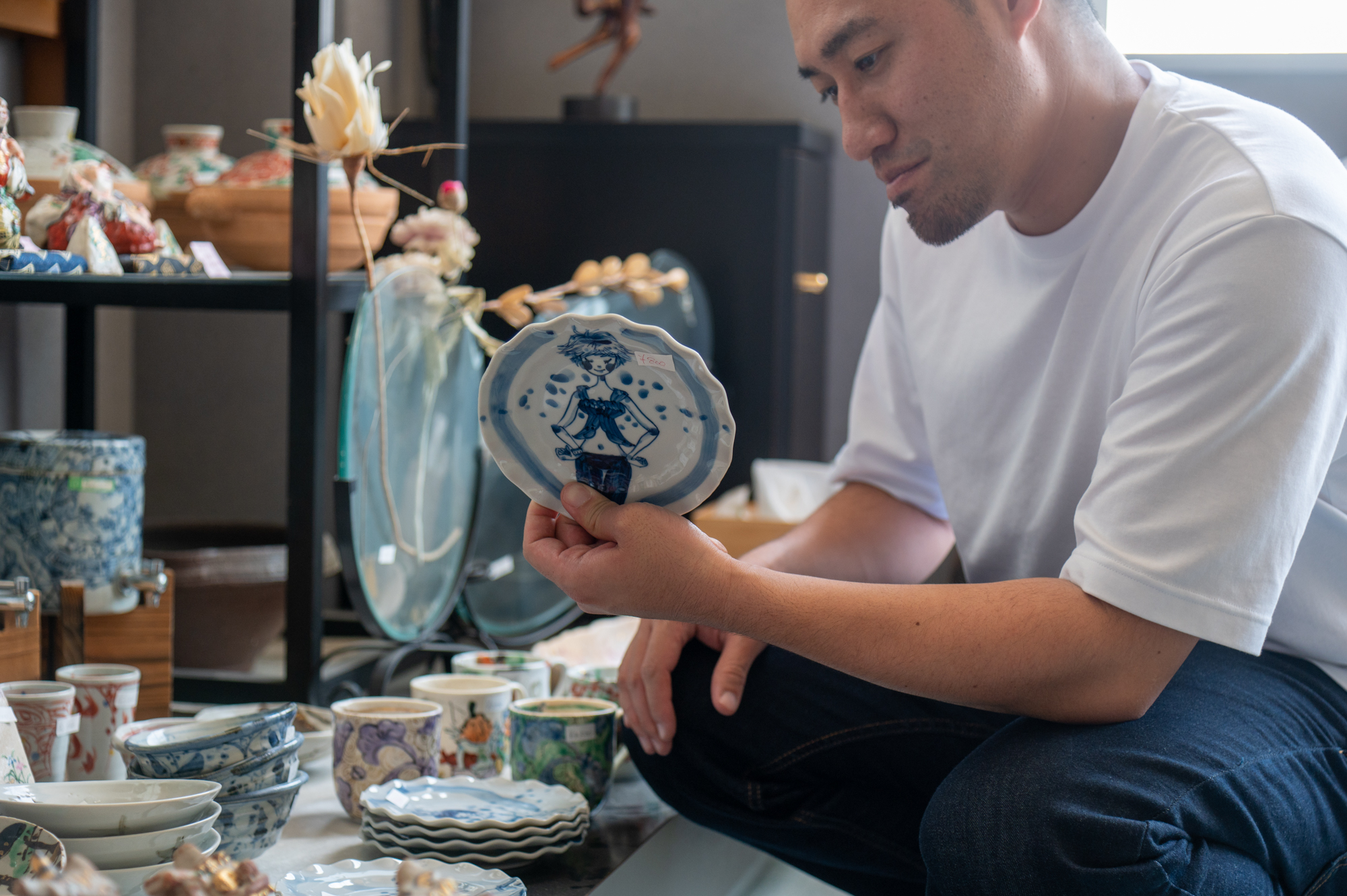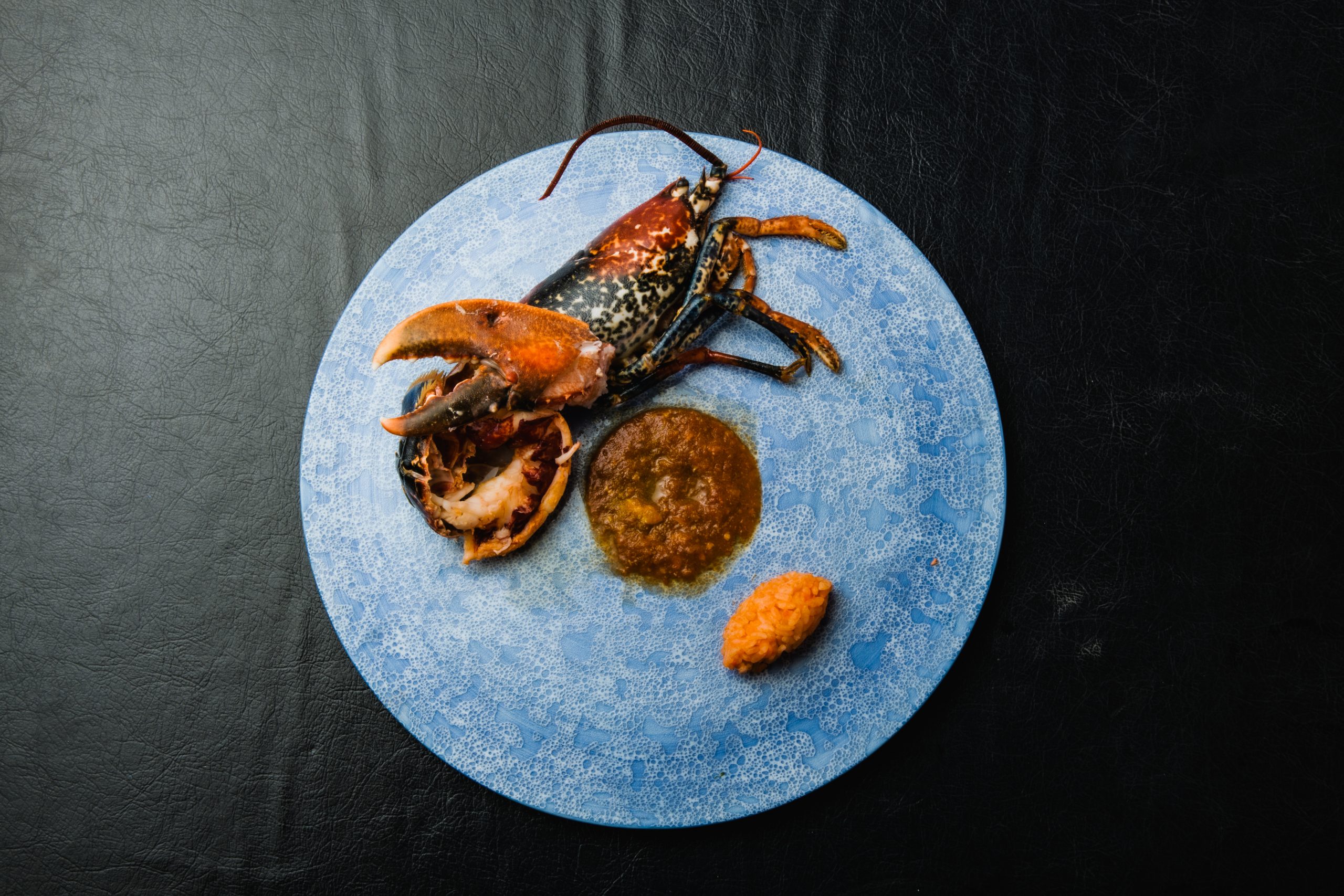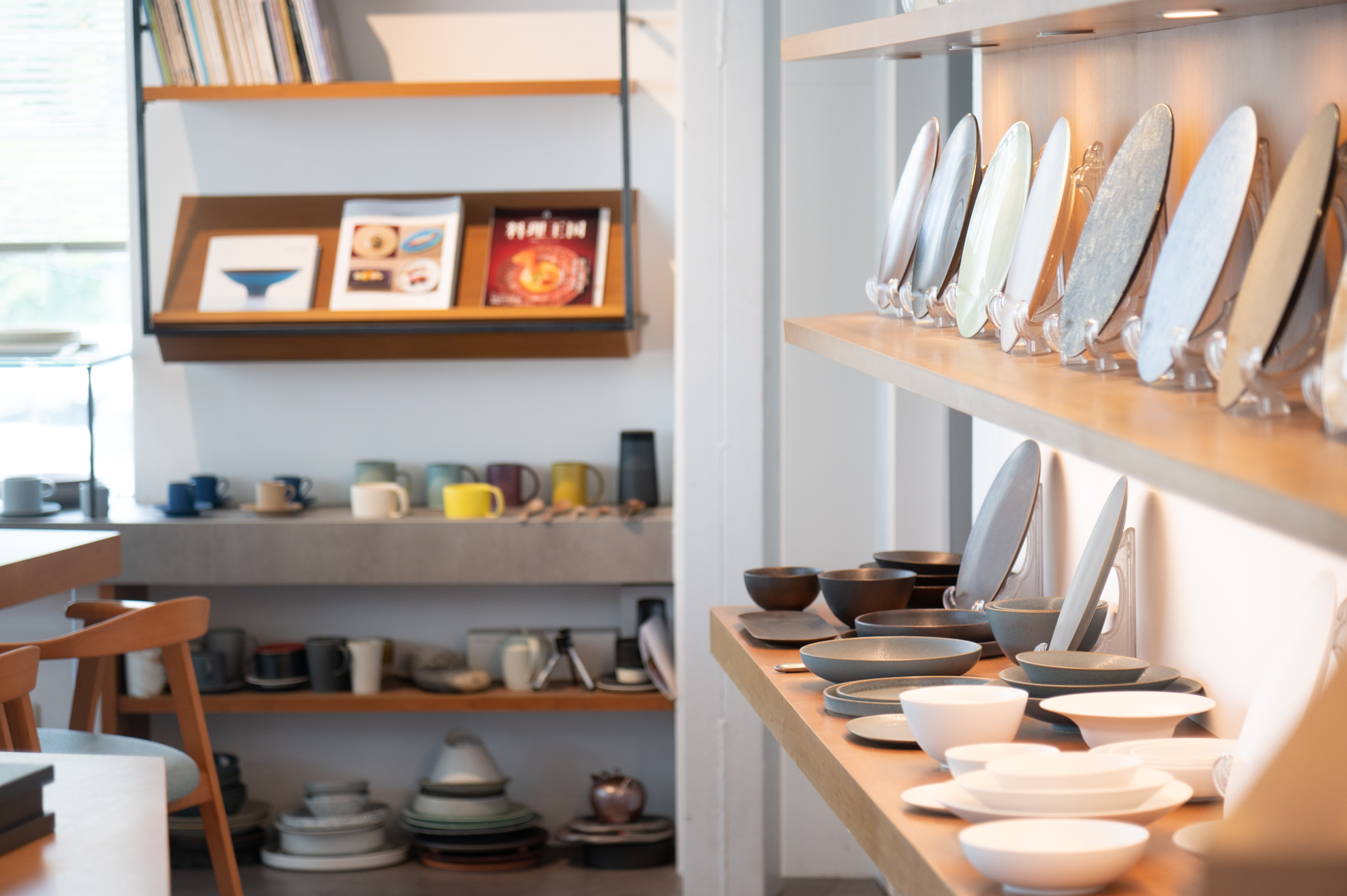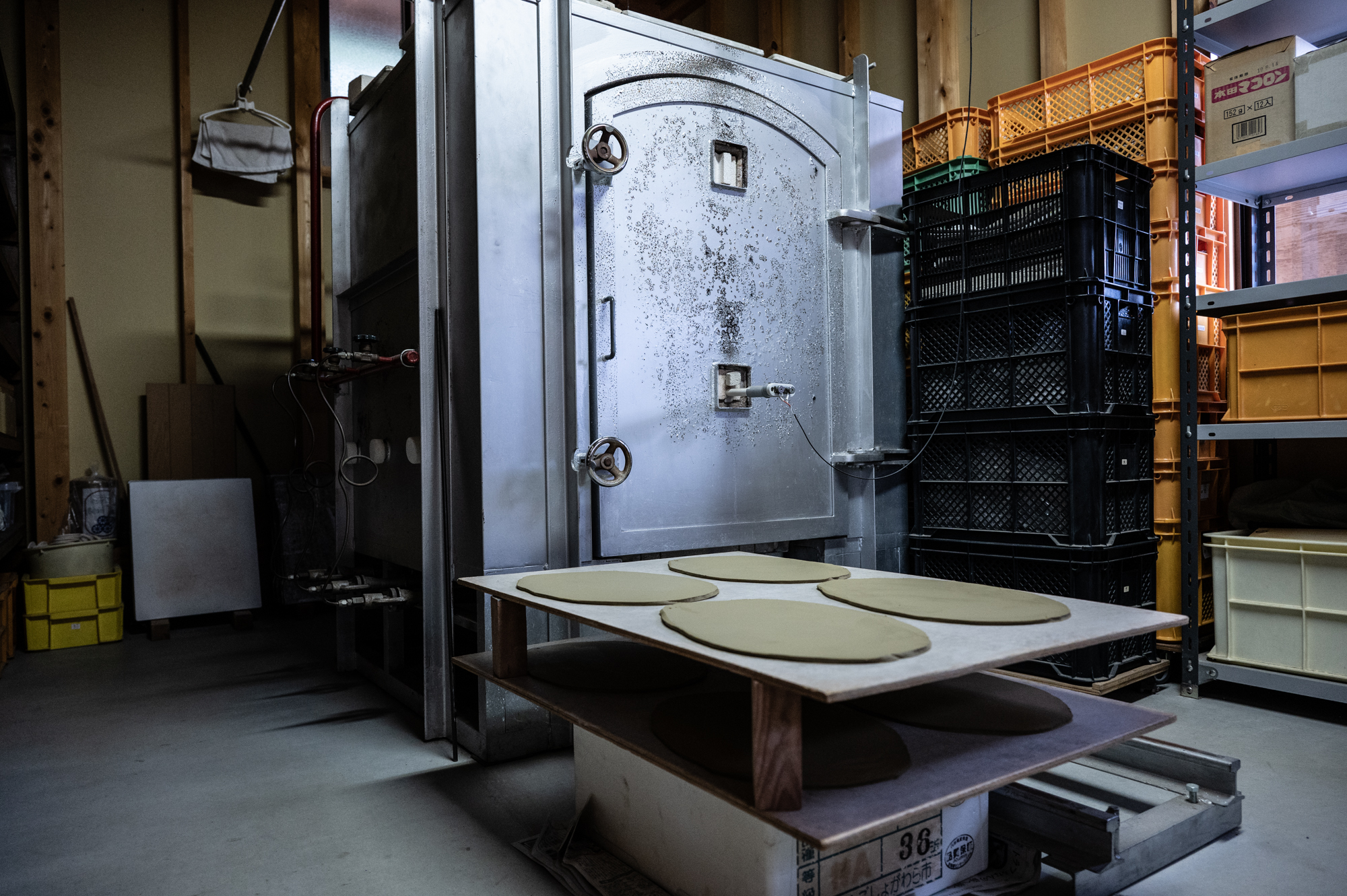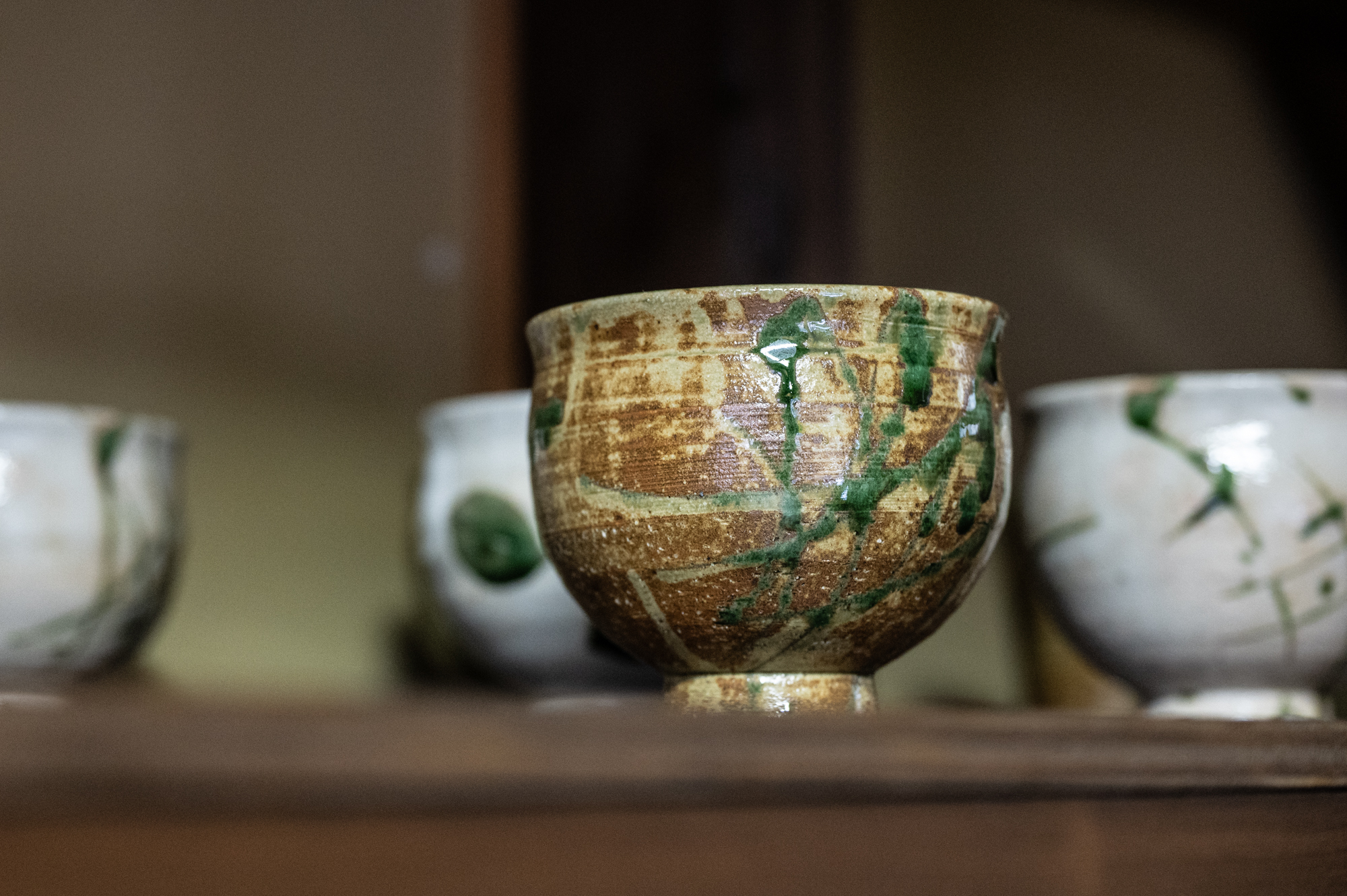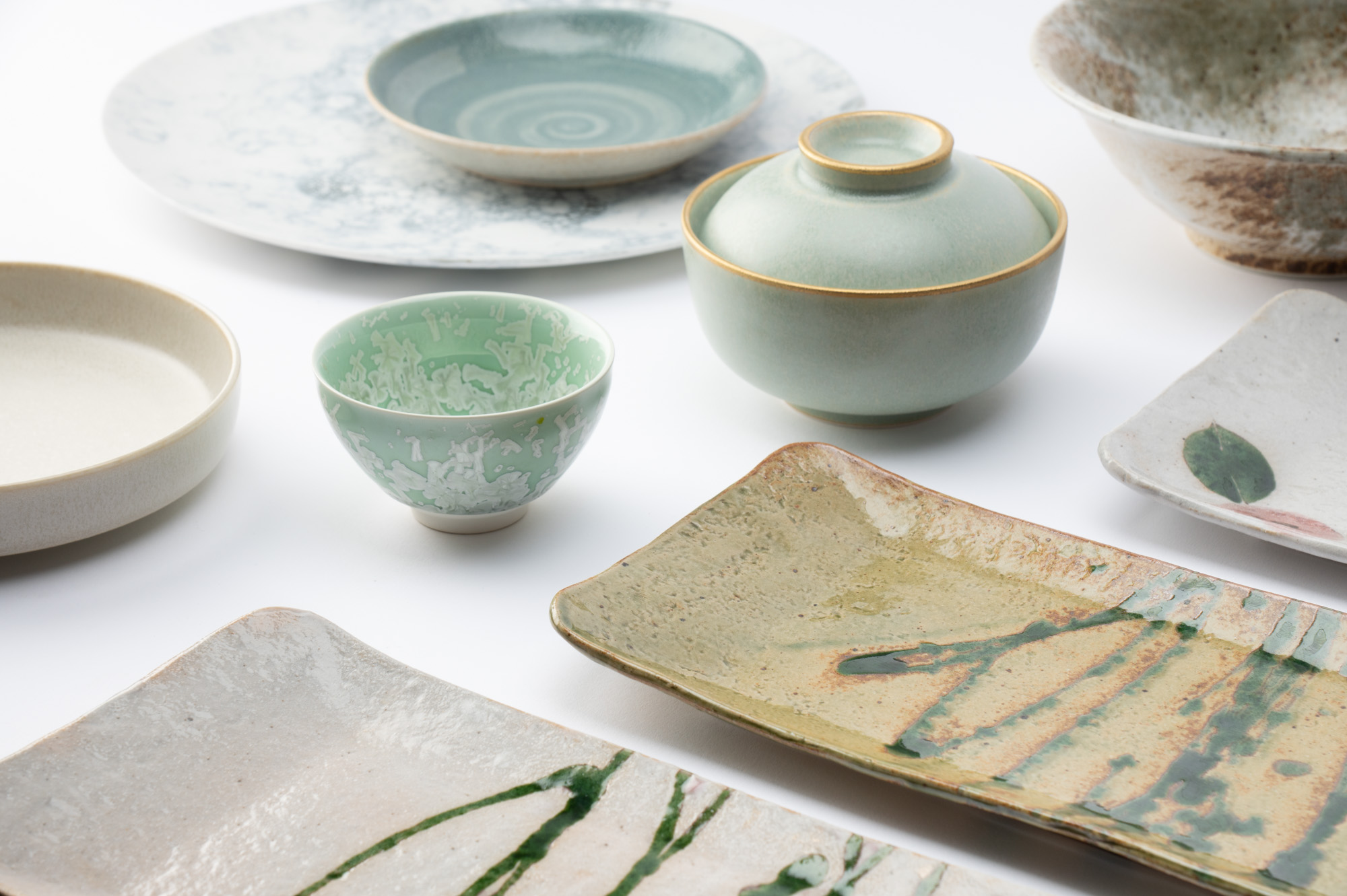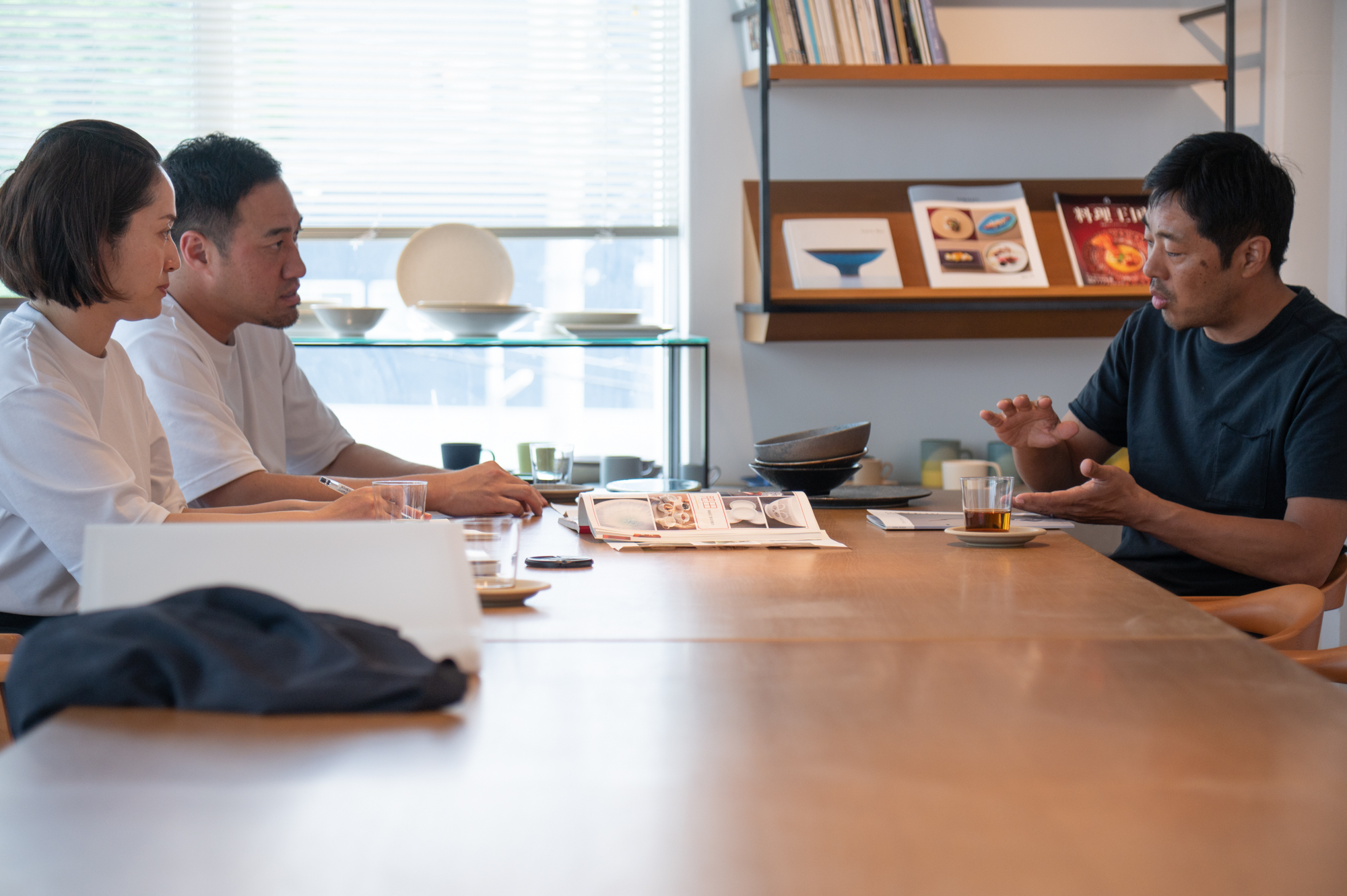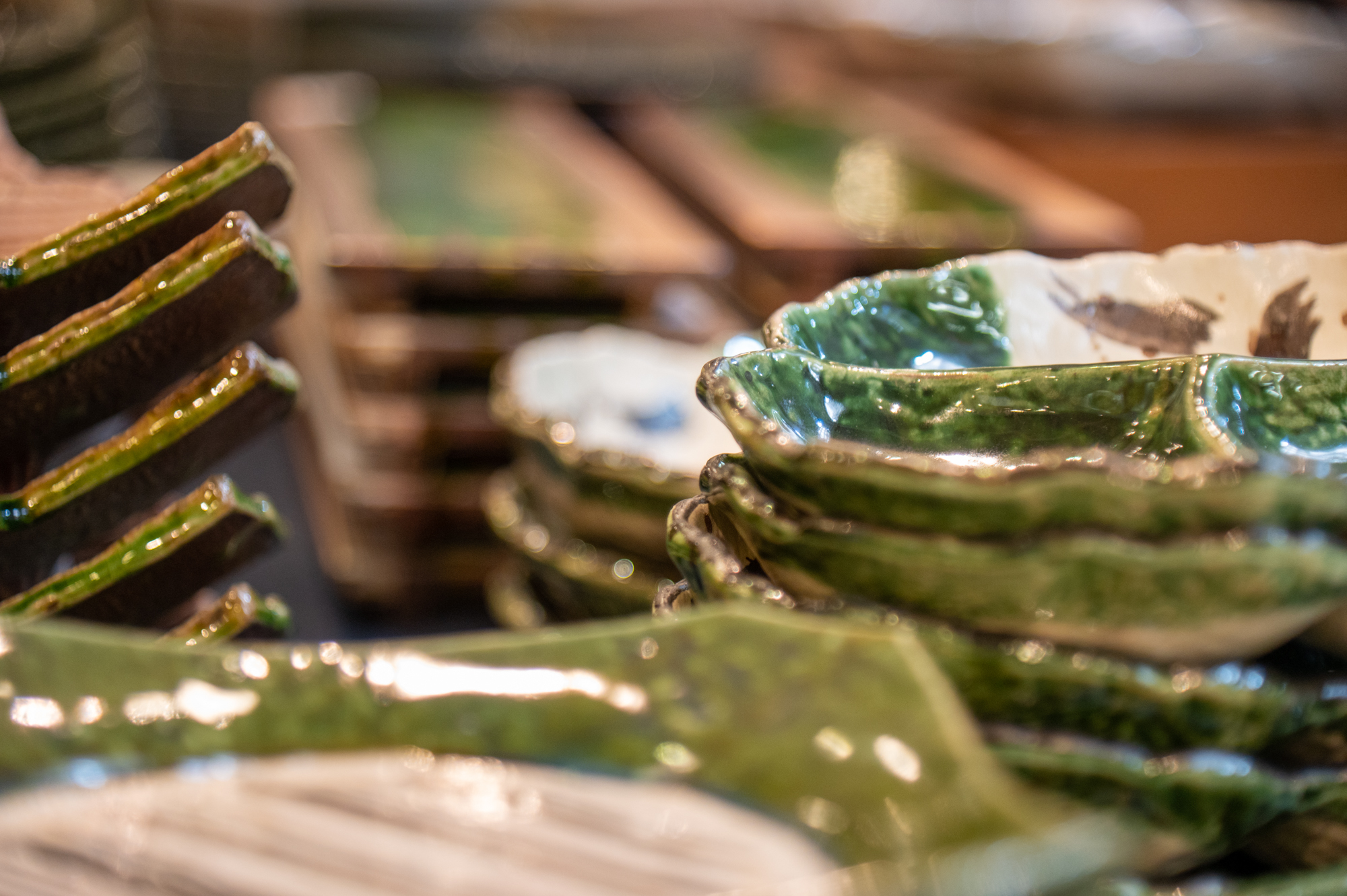
Mototsugu Fusada founded Musubi Kiln in 2020 with a mission to share Japan’s rich craft heritage through handcrafted tableware. Inspired by the concept of harmony in Japanese dining, Musubi Kiln blends tradition with modern luxury, offering unique, high-quality ceramics to top hotels and Michelin-starred restaurants worldwide. Fusada’s passion for Japanese craftsmanship and design has positioned Musubi Kiln at the forefront of the global luxury tableware market.
In this interview, Mototsugu Fusada discusses the inspiration behind Musubi Kiln, his approach to handcrafted tableware, and how the brand elevates luxury dining experiences. He shares how tableware enhances both the sensory and cultural aspects of a meal, and how Musubi Kiln’s collaborations with renowned brands reflect Japan’s artistry and craftsmanship. Fusada also explores his commitment to blending tradition with modern design and the growing global appreciation for Japanese ceramics.
- Mototsugu, you founded Musubi Kiln in 2020 with the mission to preserve and share Japan’s rich craft heritage. Can you tell us more about the inspiration behind starting Musubi Kiln, and what sets it apart in the global tableware market?
If I had to name one defining characteristic of Japanese tableware, it would be harmony. Picture a multi-course meal at an omakase restaurant or a traditional ryokan—you won’t find a uniform dining set. Instead, there’s a thoughtful mix of forms, colors, and textures that come together to create a visual and sensory balance. It’s a uniquely Japanese approach: selecting pieces that resonate with you, then expressing your own worldview through the way they come together on the table.
That idea of harmony is what inspired me to start MUSUBI KILN—and it continues to guide us today. Rather than thinking of our mission as “preserving” Japan’s craft heritage, we see it as sharing the joy of these traditions. By introducing more people to the beauty and depth of handmade Japanese tableware, we believe we can help sustain the industry naturally—through genuine appreciation and demand.
In recent years, our brand’s focus has evolved from simply “craft x dining” to “craft x lifestyle.” Just as harmony defines Japanese dining culture, we believe there are countless elements within Japanese daily life that bring richness and meaning to one’s personal space. Our goal is to enjoy these elements ourselves, and in doing so, create a community of people around the world who feel the same.
- Musubi Kiln has partnered with renowned luxury hotels and Michelin-starred restaurants, including the Four Seasons and The Shota. What role do you believe handcrafted Japanese tableware plays in creating a distinctive dining experience?
At MUSUBI KILN, we don’t see handcrafted Japanese tableware as mere vessels for food—they are the stage upon which a culinary performance unfolds. Our collaborations with luxury hotels and Michelin-starred restaurants speak to the essential role that tableware plays in creating truly memorable dining experiences.
Each piece we carry is imbued with the skills and traditions of master artisans, offering not only functionality but also the beauty of a work of art. These pieces don’t just accompany the cuisine—they elevate it. Their presence invites guests to engage with the meal through all five senses.
The textures, shapes, and subtle variations in glaze found in Japanese tableware help tell the story of the dish. For example, a piece of earthy, unglazed stoneware may evoke a connection to nature and the aesthetics of wabi-sabi, while a gleaming porcelain plate might offer a modern elegance that enhances the color and plating of fine cuisine.
Even the tactile experience matters. The feel and weight of a piece in the guest’s hand become part of the dining ritual. In a fine dining setting, every detail is intentional, and the balance and sensation of the tableware are no exception.
At MUSUBI KILN, we work closely with chefs and sommeliers to craft a seamless narrative between the food and the tableware. Our goal is to ensure that the warmth and character of each handmade piece harmonize with a restaurant’s concept, offering guests not just a meal, but a lasting and immersive experience.
- Your tableware collections span materials like porcelain, stoneware, glass, and wood. How do you choose which materials to include in your collections, and what factors influence your buying decisions?
When we develop a product at MUSUBI KILN, there are several key criteria we always consider. But across all of our items, a few principles remain consistent:
- We must genuinely want the item ourselves.
- It should embody long-life design—timeless and enduring.
- It should reflect the unique character of its region and its maker.
- And it must be sustainable across the entire value chain.
Material, to us, is just one element of a product. What matters most is how it contributes to these core values.
Over time, working in this industry, we’ve developed an instinct for what kinds of products are likely to resonate with customers overseas. One could certainly build a business just by selecting only what’s likely to sell. But that’s not the kind of work that satisfies us. We don’t just see ourselves as sellers—we’re also discerning end users who know what it means to fall in love with a piece.
- Hibino Ceramics is one of your key partners, and their Mino ware is highly regarded by chefs and restaurants around the world. What is it about Hibino’s craftsmanship that makes their tableware particularly popular with high-end dining establishments?
It’s hard to capture everything that makes Hibino exceptional in just a few words. But what stands out most is their deep understanding of the practical demands of professional kitchens—an insight earned through decades of producing tableware for commercial use.
At the same time, Hibino refuses to treat tableware as merely functional tools. They believe that plates and bowls should do more than hold food—they should inspire chefs and elevate the entire dining experience. That philosophy runs through everything they create.
In fact, we find that many clients return to Hibino again and again. There’s something about the care and intention behind their pieces that becomes addictive once you’ve used them. It’s a quiet kind of excellence that speaks for itself.
- You’ve mentioned the importance of telling the stories behind your pieces. How do you ensure that the cultural significance and artistry of each piece are conveyed to your clients, especially those outside of Japan?
At MUSUBI KILN, we believe that the best way to deepen appreciation for Japanese crafts is to help people truly understand the stories behind each piece and the artists who create them. That’s why, when introducing a product, we take care to share the full narrative, its origins, the traditions it draws from, and the meaning embedded in its design. For example, when it comes to ceramic works, we explain the characteristics of the clay and glazes used, the historical significance of the kiln it was made in, and the artisan’s unique approach to the production process. All of this helps to convey how the maker’s personality and cultural heritage are reflected in the final piece.
For our international audience, we go beyond text and offer rich visual and video content to clearly communicate the beauty and spirit of Japanese tradition. Elements that might seem ordinary to Japanese people—such as certain gestures, color palettes, or seasonal customs—often resonate deeply with people overseas. So we take the time to introduce motifs like seigaiha (waves) or shōchikubai (pine, bamboo, and plum) and explain the cultural symbolism they carry, allowing each item to serve as a tangible connection to Japanese aesthetics.
Beyond storytelling, we also prioritize showing how these items can be woven into everyday life. Through styling suggestions and table coordination examples, we help our customers envision how these pieces can enrich their own routines. Our goal is to convey that incorporating Japanese craft into one’s life isn’t just about acquiring objects—it’s about embracing a sensibility that brings quiet beauty and meaning into the everyday.
Ultimately, we see it as our mission and joy to honor traditional culture while expressing it through a modern lens. By sharing the artistry and narrative behind Japanese crafts, we hope to foster meaningful connections—musubi—between people and the pieces they bring into their lives.
- Given your experience with Japanese ceramics, can you explain the historical importance of Mino ware and why it continues to be highly valued in both traditional and contemporary dining settings?
Mino ware refers to the broad category of ceramics produced primarily in the Tono region of Gifu Prefecture. Today, it accounts for the majority of Japan’s ceramic production, making it a vital part of the country’s ceramic heritage. Its history stretches back to the Heian and Kamakura periods, when the techniques of Koseto (Old Seto ware) were introduced to the area. But it was during the Momoyama period (late 16th to early 17th century) that Mino ware truly flourished. Distinct styles such as Oribe, Shino, Ki-Seto, and Setoguro emerged in conjunction with the rise of the tea ceremony culture, captivating connoisseurs of the time.
One of the key reasons Mino ware has been so highly regarded throughout history is its spirit of innovation. Oribe ware, in particular, broke from the conventional ideals of symmetry and balance, introducing intentional distortions and bold designs that were considered revolutionary for their time. The aesthetics of wabi-sabi and asymmetry so essential to the tea ceremony remain relevant today—and Oribe’s experimental nature continues to resonate with contemporary design sensibilities.
At the same time, Mino ware is incredibly practical, making it not just an artisanal tradition, but also a versatile tool for everyday use. It is durable, highly varied in form, size, and glaze, and easy to incorporate into both Japanese and Western culinary presentations. That combination of functionality and tradition is precisely why it continues to be favored in modern dining environments around the world.
What’s more, artisans in the Mino region have long embraced innovation, readily adapting their designs and color palettes to align with modern tastes and global dining cultures. For overseas markets, for instance, we often see simpler silhouettes and tones that still preserve the distinct character of Mino ware through its earthy textures and nuanced glazes. It is this exquisite balance of heritage and innovation that makes Mino ware so valued by professional chefs and home users alike.
Ultimately, Mino ware represents a rare fusion of historical depth and creative expression—with the added benefit of usability and diversity. It is this combination that ensures its continued relevance and admiration in both traditional and contemporary settings.
- With clients such as The Prince Akatoki London and AKIRA at Japan House, how do you tailor your offerings to meet the specific needs of luxury hospitality brands while maintaining authenticity and quality?
At MUSUBI KILN, our approach to working with luxury hospitality clients begins with a deep understanding of each brand’s concept and aesthetics. We take time to listen carefully to the unique stories and guest experiences that each hotel or restaurant aims to create—only then do we begin proposing ceramic and porcelain designs that complement and elevate their space.
For brands looking to emphasize Japanese heritage, we often recommend pieces that highlight traditional techniques and motifs. For those leaning into a more modern atmosphere, we suggest simpler shapes and tones that still preserve a sense of authenticity through tactile textures and expressive glazes. This integration of brand identity and tableware is a collaborative process, often involving sample production and iterative refinements to achieve the perfect fit.
When it comes to quality, our strength lies in the trust we’ve built with master kilns and artisans across Japan. Even when incorporating modern design elements, we adhere strictly to traditional Japanese production methods and carefully selected materials, ensuring both beauty and durability. Through close partnerships with skilled producers and rigorous quality control systems, we’re able to maintain a handcrafted sensibility even at scale, delivering tableware that is as functional as it is exceptional.
- In your opinion, what is the connection between exquisite tableware and the overall atmosphere of a restaurant or hotel? How does the choice of tableware enhance the guest experience beyond just its functionality?
Exquisite tableware plays a role far beyond that of a simple vessel—it is an essential element in shaping the overall ambiance of a restaurant or hotel. From the moment a guest sits down, the beauty, texture, cohesion, and subtle narrative conveyed by the plates and cutlery engage the senses, leaving a lasting impression of the space as a whole.
For instance, in a restaurant with a modern interior, minimalist tableware enhances the clean, urban aesthetic. In contrast, a classical hotel setting may call for pieces that showcase traditional craftsmanship and luxurious glazes to evoke a sense of refined escapism. No matter the theme or concept, the right tableware deepens the spatial experience and brings cohesion to the story the space is telling.
The colors and textures of a tableware collection also have a profound effect on the presentation of the cuisine itself, and even on the perception of flavor. When the contrast and balance between dish and plate are in harmony, the dining experience becomes almost artistic, elevating the moment into something truly memorable. It’s not just that the tableware is beautiful—it’s that the meal, as served on that specific piece, becomes a complete, story-driven experience.
In luxury hospitality, authenticity is paramount. Guests expect attention to detail at every level, and tableware that reflects thoughtful craftsmanship, whether handmade by an artisan or rooted in regional traditions, reinforces the host’s commitment to excellence. Understanding the story behind each piece adds depth to the guest’s appreciation and transforms a meal into a cultural experience. This is more than functionality; it’s experiential value. It becomes the reason someone chooses to dine in that particular place.
Ultimately, the selection of tableware is inseparable from the space’s design, the chef’s artistry, and the brand’s identity. It’s a vital piece of the hospitality puzzle that brings together form, feeling, and narrative to create an unforgettable moment. When chosen with care and intention, tableware becomes not only a backdrop, but a signature of the guest experience.
- Musubi Kiln offers both small-batch custom pieces and large-scale production. How do you balance the bespoke needs of high-end restaurants with the demands of large-scale hotel clients?
At MUSUBI KILN, we’ve developed a flexible production system to meet the needs of both bespoke orders for high-end restaurants and large-volume manufacturing for luxury hotel clients. We work with an extensive network of trusted kilns and artisans across Japan—some specialize in small-batch, highly customized production using traditional techniques, while others operate larger facilities capable of handling high-volume orders with consistency and reliability. This allows us to allocate the ideal resources for each project, depending on the scale and complexity.
When it comes to quality control, we maintain a unified inspection standard to ensure that every piece, whether custom-made or mass-produced, upholds what we call “MUSUBI KILN quality.” For bespoke projects, this includes detailed consultations during the prototyping stage and a thorough double-check process by both the artisan and our team before delivery. By embracing both precision and craftsmanship, we’re able to deliver the same level of excellence at every scale.
- Japanese tableware, especially pieces from Hibino Ceramics, is known for its ability to complement a wide range of culinary styles. How do you collaborate with chefs and restaurateurs to create tableware that elevates their food presentation and dining experience?
Hibino’s strength lies in its ability to produce high-quality tableware at scale, offering a wide range of products that are not only beautifully crafted but also reasonably priced. For this reason, many of our hospitality clients tend to select from Hibino’s existing collection rather than pursuing small-lot custom orders.
That said, chef and restaurateur feedback plays a vital role in Hibino’s ongoing product development. One of the brand’s core missions is to inspire culinary professionals, and we share that vision. At MUSUBI KILN, we go beyond showcasing the functional aspects of each piece, we strive to provide context through the story of its creation, the artisan behind it, and curated styling examples that show how the piece complements different cuisines. By doing so, we help chefs and hospitality professionals fully appreciate the unique qualities of Hibino tableware, allowing them to craft more immersive and memorable dining experiences.
- Looking to the future, what trends do you see emerging in the world of luxury dining and tableware? Are there any new materials, designs, or collaborations that you’re particularly excited about?
In the world of luxury dining and tableware, the demand for truly one-of-a-kind experiences continues to grow. I believe we’ll see even greater interest in innovative approaches that honor tradition while incorporating a modern sensibility. At MUSUBI KILN, we’re especially eager to collaborate with hospitality brands that seek to go beyond surface-level design—those who aim to offer their guests something authentic, meaningful, and memorable.
To discover the latest collections from Musubi Kiln, please visit here.

